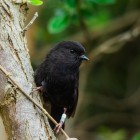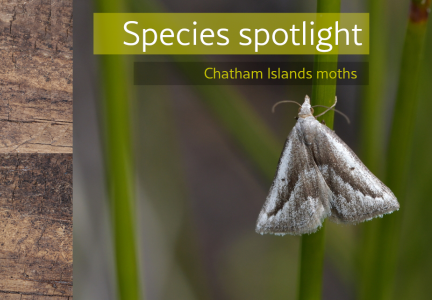
Blog and news
Species Spotlight: Chatham Islands moths
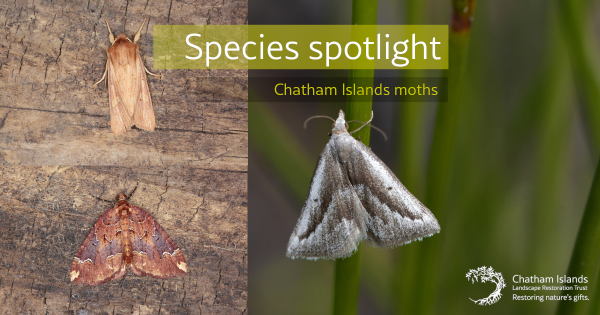
Moths don't always get the air time they deserve.
They're small, which means they can be hard to notice. They tend to be more subtly coloured than butterflies, even though their patterning is quite beautiful. They also haven't been the focus of as much scientific study as other species, which means there's plenty for us to learn.
However, they play an important role in our environment.
The presence of moths is an indicator that a habitat is rich and healthy. Often moths live their entire lives on and around one plant. They're pollinators for some plants, and play a part in nutrient and carbon cycling. They’re vital in food webs, providing a food source for some of our most beloved birds and other animals. Some of them are also unreasonably pretty! (Evidence below)
There are estimated to be over 100 species of moth across the Chatham Islands, around 30 of which are only found here. We've picked five of our moths to shine the species spotlight on. You can also click through to find these images and sightings on iNaturalist, along with others.
Austrocidaria haemophaea
This moth has been voted “the best endemic moth” by some experts. It has rich brown wings, with two uneven stripes of darker colour on a lighter shade, and sometimes little flecks of white like lace. This fantastic patterning helps it blend in well with the environment it lives in.
Legendary kiwi entomologist John Dugdale thought the caterpillars fed on coprosma foliage.
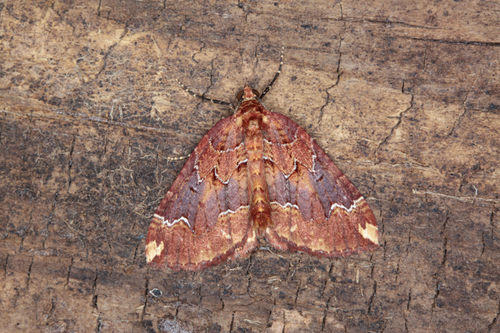
Austrocidaria haemophaea Image: Dave Boyle
Ichneutica seducta
Rather appropriately named, this pretty moth may seduce you over to the world of lepidoptery (the study of moths and butterflies). It ranges from a pale to orangey-brown ochre colour. Endemic to the Chathams, there are two other endemic variants from this group.
I. seducta is thought to be associated with one of our great Chatham plants, Dracophyllum arboretum. These moths are on the wing from November through to January. Although naturally uncommon, this species is not currently threatened, and can be found in forests in the southern tablelands of main Chatham and on Pitt.
You can find out more about this species in Manaaki Whenua's Fauna of NZ series, number 80.
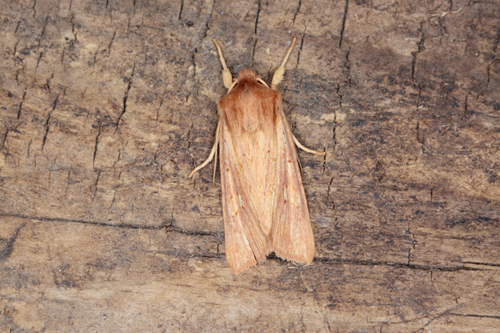
Ichneutica seducta Image: Dave Boyle
Austramathes squaliolus
Also endemic to the Chathams, A. squaliolus is often seen at dusk near Chatham Island mahoe, the favourite food of their caterpillars. The black and brown stiped patterns across this stout moth’s light-brown wings make for a good camouflage against mahoe bark. Adults are normally seen in November to December.
This moth is an example of island isolation and co-evolution. From being similar to mainland moths, over time it’s slowly become a Chatham Island specialist. It's now considered to be its own species.
You can find out more details about this species in the Fauna of NZ series, number 73.

Austramathes squaliolus Image: Dave Boyle
Erecthias decoranda
E. decoranda upends all expectations by hanging around in the DAYTIME! This tiny dayflier has wings patterned with white and light gold-brown, with splotches of darker brown.
Their caterpillars seem to play an important role in decomposing leaf litter. Because they spend time around the forest floor, as you walk through the bush and disrupt them, it can seem as though they’re following you everywhere.
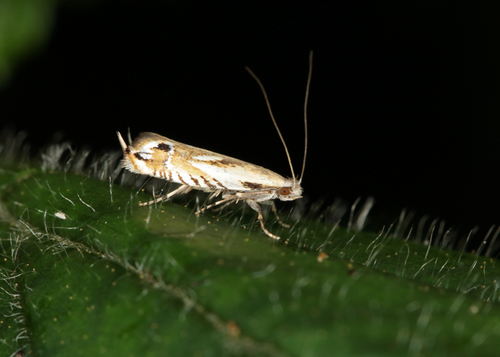
Erecthias decoranda Image: Dave Boyle
Swamp Looper - Adeixis griseata
The swamp looper's behaviour has earned it a common English name. This native is found across Aotearoa and – as the name suggests – it tends to live in swampy areas. The Chathams have many such areas, providing lots of potential habitat.
Adults are seen flitting around wetlands from October to January. The swamp looper has silvery-grey wings with a dot, with two dark-brown triangular shapes on its forewing.
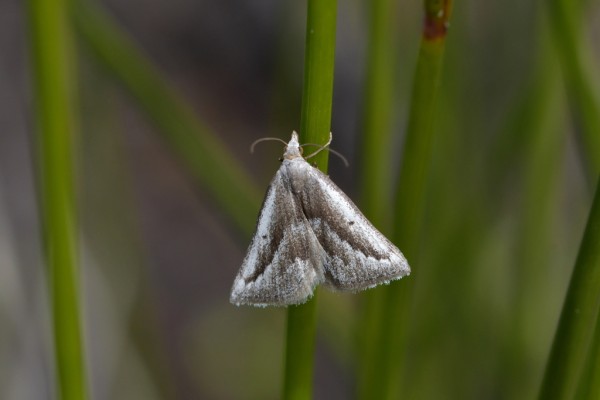
Swamp looper Image: Christopher Stephens
Want to learn more?
A few of these moths, plus others, have listings in Manaaki Whenua's Fauna of New Zealand series.
We've included links to iNaturalist for each of these moths. iNaturalist is a great citizen science research where you can find sightings of all kinds of species. If you're keen, you can also start your own account and record different species you see. It can help you identify species while contributing to scientific knowledge.

